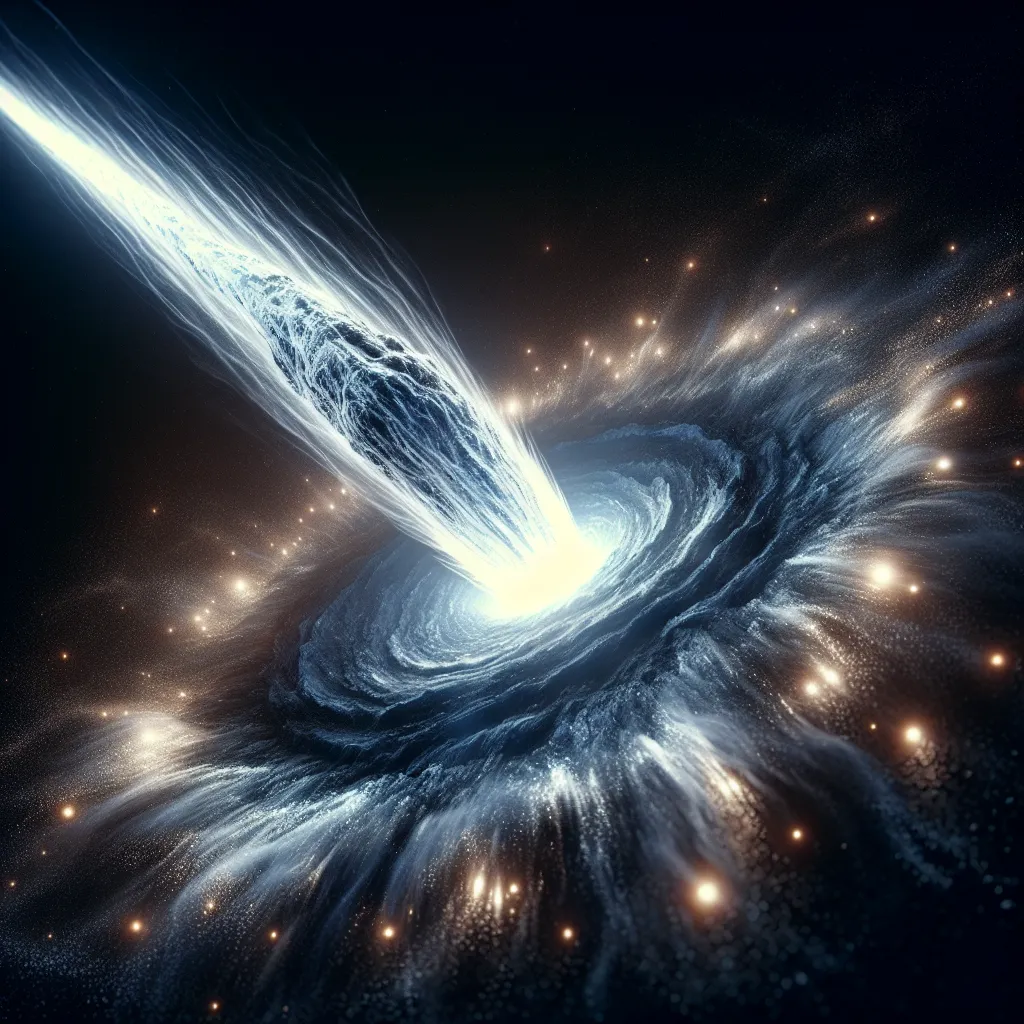Comets, those mysterious celestial visitors, have always fascinated me. They seem like ancient messengers, time travelers from the early universe, carrying secrets from the cosmos. The idea that they could hold clues to life’s beginnings on Earth is thrilling. Imagine if we could link the amino acids found on comets to those essential for life here—it would be one of science’s most groundbreaking discoveries.
Despite their potential to bring life, comets also pose a significant threat. We’re talking about objects the size of mountains; if one were to impact Earth, the energy release would be catastrophic. Yet, paradoxically, we might owe our very existence to these cosmic wanderers. Some scientists believe comets brought the essential chemicals for life to our planet billions of years ago.
Seeing a comet streak across the sky is a rare and awe-inspiring experience. These glowing, fuzzy balls with sweeping tails are a visual spectacle. Their journeys through the solar system, looping in toward the sun from the vast depths of space, can last millions of years. Many of them swing by Earth frequently, almost like old cosmic friends.
A comet is essentially a frozen mix of rock and ice, several miles across. But all we see is a glowing ball of light with a long tail. Beyond their beauty, comets are crucial to understanding some of the deepest mysteries in science. They are like frozen time capsules from the birth of the solar system, preserving the conditions and materials from that primordial era.
Scientists are curious about the ingredients for life that comets may carry. The thinking is that billions of years ago, comets might have bombarded Earth, delivering these necessary components. But they can also bring massive destruction. An impact from a comet could be devastating, potentially wiping out life as we know it.
Studying comets provides us with a glimpse into the conditions that existed when the solar system was first forming. Trillions of these icy bodies lie in the outer regions of the solar system, from the Kuiper Belt to the distant Oort Cloud. Occasionally, some of these comets are nudged out of their remote orbits by gravitational disturbances, sending them hurtling towards the inner solar system.
As a comet gets closer to the sun, it undergoes remarkable transformations. Heat starts to vaporize its frozen gases, causing it to release streams of dust and gas. This activity forms a coma—a surrounding cloud of gas and dust—and the iconic tail that can stretch millions of miles into space. The solar wind, a stream of charged particles from the sun, further shapes this second tail, creating a spectacular celestial display.
Closer to the sun, the comet’s surface becomes agitated with intense activity. Water ice vaporizes, resulting in powerful jets that shoot gases and particles into space. These forces make the comet tumble and can even alter its trajectory. The tail glows brilliantly, stretched out millions of miles, while the nucleus, the solid core, loses tonnes of its mass in this fiery passage.
Modern space missions have revolutionized our understanding of these celestial objects. Probes like Rosetta have landed on comets, revealing details about their composition and activity. For instance, missions have shown that comets are not snow-white but often covered in dark dust and complex terrain features.
Comets are more than just ancient relics; they are active, complex worlds that significantly differ from each other. Some even exhibit unique behaviors, such as snowing chunks of dry ice. Each one has its own story, with different compositions and histories, offering new insights with every mission.
Strikingly, comets might have played a role in shaping not just Earth but other celestial bodies, too. Take Titan, Saturn’s moon, for example. Its atmosphere and liquid methane lakes suggest that cometary impacts over millions of years could have delivered the necessary compounds to create such conditions.
Comets’ role in delivering life’s ingredients to Earth is one of the most captivating theories in science. Findings from comet studies, like the presence of amino acids, support this idea. These space travelers could have seeded Earth with the building blocks of life, leading to the world we know today.
The story of life on Earth, from a barren and hostile planet to one teeming with life, potentially began with comet impacts. This narrative connects us to the cosmos in a profound way, suggesting that the raw materials for life might have come from these distant visitors. The search for more definitive proof continues, and in the meantime, the idea that our origins might be traced back to the stars remains enticingly poetic.






